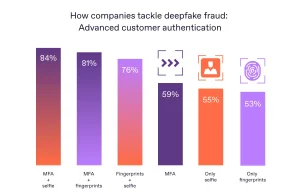Sustainable Ecommerce: How Green Practices Are Shaping the Industry

xr:d:DAFbfPTbaRY:263,j:2721952023,t:23041412
Let’s be honest—ecommerce isn’t exactly known for its eco-friendly reputation. Between excessive packaging, carbon-heavy shipping, and fast-fashion waste, the industry has a sustainability problem. But here’s the deal: things are changing. Fast. A wave of green practices is reshaping how online businesses operate, and honestly? It’s about time.
The Rise of Eco-Conscious Consumers
You know that moment when you hesitate before clicking “buy” because you’re picturing another cardboard box piling up in your recycling bin? Yeah, you’re not alone. 73% of global consumers say they’d change their buying habits to reduce environmental impact. That’s a seismic shift—and smart brands are paying attention.
What’s driving this? A few things:
- Climate anxiety—especially among Gen Z and millennials
- Transparency demands (thanks, social media)
- Simple economics: sustainable products often last longer, saving money long-term
Green Practices Taking Over Ecommerce
1. Packaging That Doesn’t Hurt the Planet
Remember unboxing that tiny USB drive wrapped in enough plastic to suffocate a sea turtle? Yeah, that’s out. Brands are now:
- Using mushroom-based or seaweed packaging (yes, really)
- Switching to 100% recycled cardboard with soy-based inks
- Eliminating filler materials altogether—because do socks really need tissue paper?
2. Carbon-Neutral Shipping Wars
Amazon’s “Climate Pledge Friendly” badge was just the start. Now, smaller players are one-upping giants by:
- Offering “slow shipping” discounts (fewer trucks, fewer emissions)
- Partnering with carbon offset programs—sometimes planting a tree with every order
- Using electric delivery bikes in urban areas
3. The Circular Economy Goes Digital
Here’s where it gets clever. Instead of the old “buy-use-trash” cycle, brands are building loyalty through:
- Take-back programs (send back old sneakers for recycling, get store credit)
- Resale platforms built into their sites (Patagonia’s Worn Wear is crushing this)
- Leasing models for high-end items—why own a designer bag when you can rotate styles?
The Hidden Challenges (Nobody Talks About)
Sure, going green sounds great—until you realize organic cotton costs 20% more, or that “compostable” packaging only breaks down in industrial facilities. The roadblocks are real:
| Challenge | Smart Workaround |
| Higher material costs | Absorb some cost, but be transparent—”This costs $3 more because…” |
| Greenwashing accusations | Get certifications (B Corp, Fair Trade) to back claims |
| Customer skepticism | Show behind-the-scenes footage of sustainable factories |
Where This Is All Heading
Imagine a world where your online shopping cart calculates emissions like nutrition labels—that’s already happening in Scandinavia. Or where your “buy now” button offers to offset your carbon footprint for 50 cents. The future of ecommerce isn’t just convenient; it’s conscientious.
And here’s the kicker: sustainability isn’t just good ethics—it’s good business. Brands embracing these practices see up to 60% higher customer retention. Because when you align with your customers’ values, they stick around.
So, is the ecommerce industry fixed? Not even close. But for the first time, the race to the top isn’t just about speed and price—it’s about who can leave the lightest footprint.








